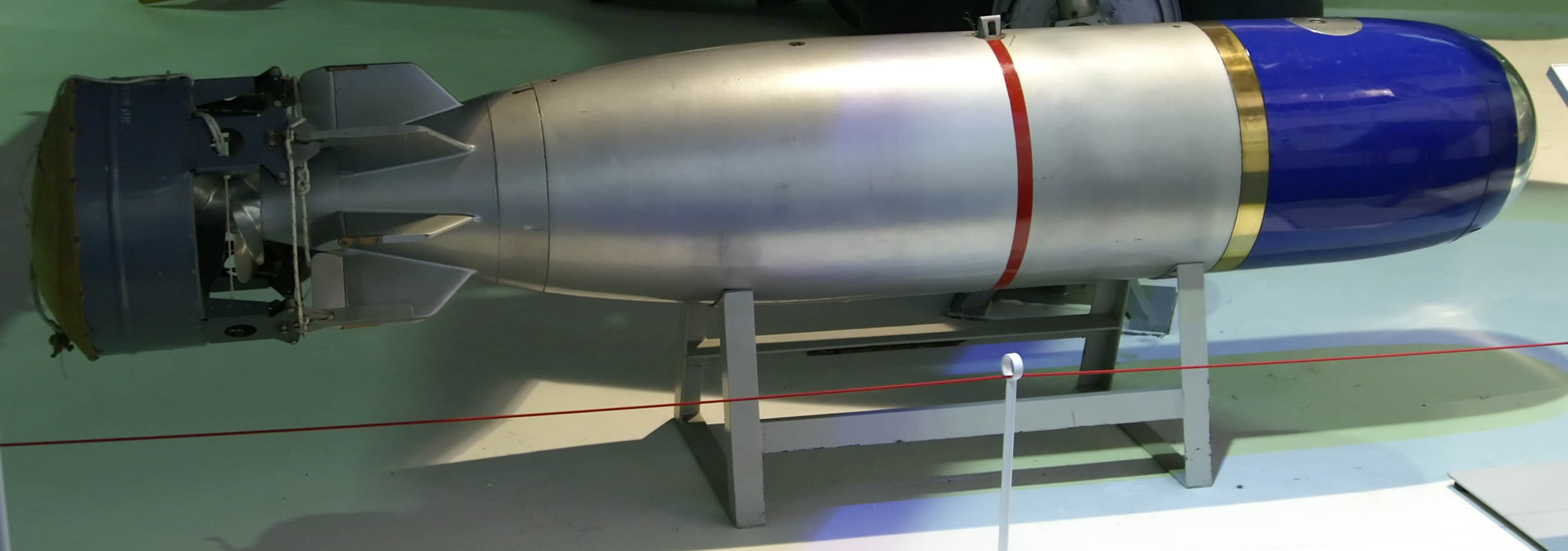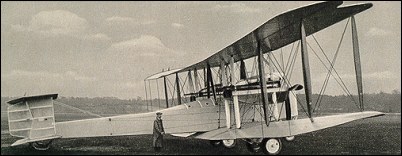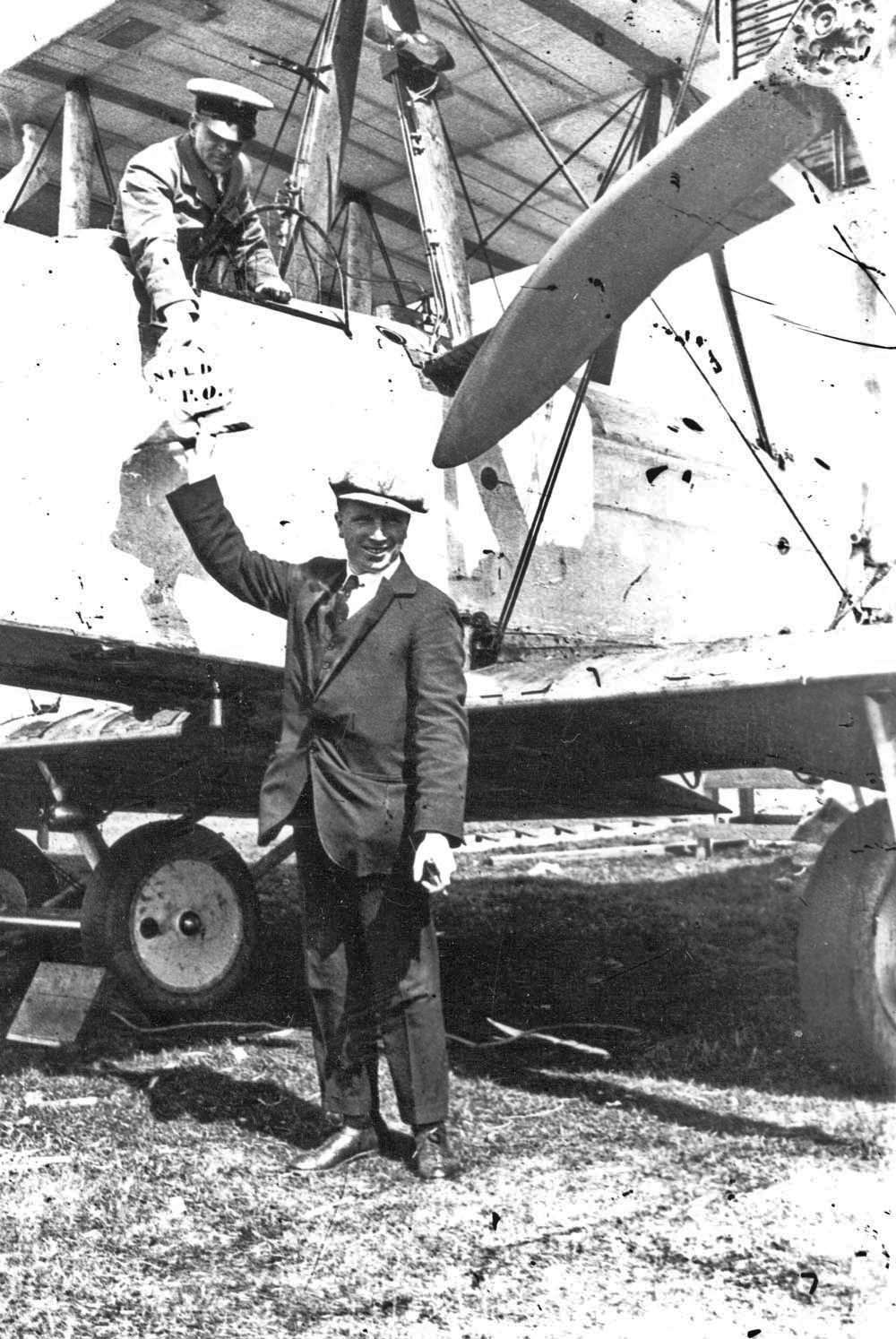|
Short Shirl
The Short N.1B Shirl was a British single-seat biplane, intended to carry heavy torpedoes from early aircraft carriers late in World War I. It met its specifications but planned production was ended with the Armistice of 1918. The design was developed further for an attempt to cross the Atlantic nonstop for the first time, but this was not successful. Development The first shipborne torpedo bomber, the Sopwith Cuckoo had been well received, but was unable to carry the Royal Navy's 1,423 lb (645 kg) Mark VIII torpedo that was required to destroy the largest warships. The Admiralty issued a Specification (N.1B) in late 1917, for an aircraft that could carry this torpedo, and Short Brothers and Blackburn submitted proposals, Short's with the Shirl and Blackburn with the Blackburd. Both manufacturers were asked to provide three prototypes, using the 385 hp (290 kW) Rolls-Royce Eagle VIII water-cooled engine. The Shirl was a two-bay biplane with foldable fab ... [...More Info...] [...Related Items...] OR: [Wikipedia] [Google] [Baidu] |
WikiProject Aircraft
A WikiProject, or Wikiproject, is a Wikimedia movement affinity group for contributors with shared goals. WikiProjects are prevalent within the largest wiki, Wikipedia, and exist to varying degrees within Wikimedia project, sister projects such as Wiktionary, Wikiquote, Wikidata, and Wikisource. They also exist in different languages, and translation of articles is a form of their collaboration. During the COVID-19 pandemic, CBS News noted the role of Wikipedia's WikiProject Medicine in maintaining the accuracy of articles related to the disease. Another WikiProject that has drawn attention is WikiProject Women Scientists, which was profiled by ''Smithsonian Magazine, Smithsonian'' for its efforts to improve coverage of women scientists which the profile noted had "helped increase the number of female scientists on Wikipedia from around 1,600 to over 5,000". On Wikipedia Some Wikipedia WikiProjects are substantial enough to engage in cooperative activities with outside organization ... [...More Info...] [...Related Items...] OR: [Wikipedia] [Google] [Baidu] |
Plywood
Plywood is a material manufactured from thin layers or "plies" of wood veneer that are glued together with adjacent layers having their wood grain rotated up to 90 degrees to one another. It is an engineered wood from the family of manufactured boards which include medium-density fibreboard (MDF), oriented strand board (OSB) and particle board (chipboard). All plywoods bind resin and wood fibre sheets (cellulose cells are long, strong and thin) to form a composite material. This alternation of the grain is called ''cross-graining'' and has several important benefits: it reduces the tendency of wood to split when nailed at the edges; it reduces expansion and shrinkage, providing improved dimensional stability; and it makes the strength of the panel consistent across all directions. There is usually an odd number of plies, so that the sheet is balanced—this reduces warping. Because plywood is bonded with grains running against one another and with an odd number of composit ... [...More Info...] [...Related Items...] OR: [Wikipedia] [Google] [Baidu] |
Short Brothers Aircraft
Short may refer to: Places * Short (crater), a lunar impact crater on the near side of the Moon * Short, Mississippi, an unincorporated community * Short, Oklahoma, a census-designated place People * Short (surname) * List of people known as the Short Arts, entertainment, and media * Short film, a cinema format (also called film short or short subject) * Short story, prose generally readable in one sitting * '' The Short-Timers'', a 1979 semi-autobiographical novel by Gustav Hasford, about military short-timers in Vietnam Brands and enterprises * Short Brothers, a British aerospace company * Short Brothers of Sunderland, former English shipbuilder Computing and technology * Short circuit, an accidental connection between two nodes of an electrical circuit * Short integer, a computer datatype Finance * Short (finance), stock-trading position * Short snorter, a banknote signed by fellow travelers, common during World War II Foodstuffs * Short pastry, one which is rich in ... [...More Info...] [...Related Items...] OR: [Wikipedia] [Google] [Baidu] |
1910s British Bomber Aircraft
Year 191 ( CXCI) was a common year starting on Friday (link will display the full calendar) of the Julian calendar. At the time, it was known as the Year of the Consulship of Apronianus and Bradua (or, less frequently, year 944 ''Ab urbe condita''). The denomination 191 for this year has been used since the early medieval period, when the Anno Domini calendar era became the prevalent method in Europe for naming years. Events By place Parthia * King Vologases IV of Parthia dies after a 44-year reign, and is succeeded by his son Vologases V. China * A coalition of Chinese warlords from the east of Hangu Pass launches a punitive campaign against the warlord Dong Zhuo, who seized control of the central government in 189, and held the figurehead Emperor Xian hostage. After suffering some defeats against the coalition forces, Dong Zhuo forcefully relocates the imperial capital from Luoyang to Chang'an. Before leaving, Dong Zhuo orders his troops to loot the tombs of the H ... [...More Info...] [...Related Items...] OR: [Wikipedia] [Google] [Baidu] |
Oxford English Dictionary
The ''Oxford English Dictionary'' (''OED'') is the first and foundational historical dictionary of the English language, published by Oxford University Press (OUP). It traces the historical development of the English language, providing a comprehensive resource to scholars and academic researchers, as well as describing usage in its many variations throughout the world. Work began on the dictionary in 1857, but it was only in 1884 that it began to be published in unbound Serial (literature), fascicles as work continued on the project, under the name of ''A New English Dictionary on Historical Principles; Founded Mainly on the Materials Collected by The Philological Society''. In 1895, the title ''The Oxford English Dictionary'' was first used unofficially on the covers of the series, and in 1928 the full dictionary was republished in 10 bound volumes. In 1933, the title ''The Oxford English Dictionary'' fully replaced the former name in all occurrences in its reprinting as 12 ... [...More Info...] [...Related Items...] OR: [Wikipedia] [Google] [Baidu] |
18 Inch Mark VIII Torpedo
There have been a number of 18-inch torpedoes in service with the United Kingdom. These have been used on ships of the Royal Navy and aircraft of both the Fleet Air Arm and Royal Air Force, while Royal Navy surface ships and submarines use 21-inch torpedoes. The British "18-inch" torpedoes were in diameter, beginning with the "Fiume" Whitehead torpedo of 1890. 45 cm "Fiume" (Whitehead) torpedo First introduced into British service in 1894. * Year : about 1888 * Weight : * Length : * Warhead : wet gun-cotton * Performance : for * Propulsion : Compressed air Mark V Used on the River-class and 1905 Tribal-class destroyers. * Year : about 1899 * Weight : * Warhead : including pistol * Propulsion : Compressed air Mark VI Used on destroyers of the early 1900s. * Year : about 1904 * Performance : for or for * Propulsion : Compressed air Mark VII and VII* Introduced on the 1908 members of the 1905 Tribal class destroyers. Used by torpedo boats built before t ... [...More Info...] [...Related Items...] OR: [Wikipedia] [Google] [Baidu] |
Vickers Vimy
The Vickers Vimy was a British heavy bomber aircraft developed and manufactured by Vickers Limited. Developed during the latter stages of the First World War to equip the Royal Flying Corps (RFC), the Vimy was designed by Reginald Kirshaw "Rex" Pierson, Vickers' chief designer. Only a handful of Vickers Vimy aircraft had entered service by the time the Armistice of 11 November 1918 came into effect, so the type did not serve in active combat operations during the war, but the Vimy became the core of the Royal Air Force (RAF)'s heavy bomber force throughout the 1920s. The Vimy achieved success as both a military and a civil aircraft, the latter using the ''Vimy Commercial'' variant. A dedicated transport derivative of the Vimy, the Vickers Vernon, became the first troop-transport aircraft operated by the RAF. During the interwar period the Vimy set several records for long-distance flights, the most celebrated and significant of these being the first non-stop crossing of the A ... [...More Info...] [...Related Items...] OR: [Wikipedia] [Google] [Baidu] |
Alcock And Brown
British aviators John Alcock and Arthur Brown made the first non-stop transatlantic flight in June 1919. They flew a modified First World War Vickers Vimy bomber from St. John's, Newfoundland, to Clifden, County Galway, Ireland. The Secretary of State for Air, Winston Churchill, presented them with the ''Daily Mail'' prize for the first crossing of the Atlantic Ocean by aeroplane in "less than 72 consecutive hours." A small amount of mail was carried on the flight, making it the first transatlantic airmail flight. The two aviators were awarded the honour of Knight Commander of the Most Excellent Order of the British Empire (KBE) by King George V at Windsor Castle a week later. Background John Alcock was born in 1892 in Basford House on Seymour Grove, Firswood, Manchester, England. Known to his family and friends as "Jack", he first became interested in flying at the age of seventeen and gained his pilot's licence in November 1912. Alcock was a regular competitor in aircraft ... [...More Info...] [...Related Items...] OR: [Wikipedia] [Google] [Baidu] |
Irish Sea
The Irish Sea or , gv, Y Keayn Yernagh, sco, Erse Sie, gd, Muir Èireann , Ulster-Scots: ''Airish Sea'', cy, Môr Iwerddon . is an extensive body of water that separates the islands of Ireland and Great Britain. It is linked to the Celtic Sea in the south by St George's Channel and to the Inner Seas off the West Coast of Scotland in the north by the North Channel. Anglesey, North Wales, is the largest island in the Irish Sea, followed by the Isle of Man. The term ''Manx Sea'' may occasionally be encountered ( cy, Môr Manaw, ga, Muir Meann gv, Mooir Vannin, gd, Muir Mhanainn). On its shoreline are Scotland to the north, England to the east, Wales to the southeast, Northern Ireland and the Republic of Ireland to the west. The Irish Sea is of significant economic importance to regional trade, shipping and transport, as well as fishing and power generation in the form of wind power and nuclear power plants. Annual traffic between Great Britain and Ireland a ... [...More Info...] [...Related Items...] OR: [Wikipedia] [Google] [Baidu] |
Curragh
The Curragh ( ; ga, An Currach ) is a flat open plain of almost of common land in County Kildare. This area is well known for Irish horse breeding and training. The Irish National Stud is located on the edge of Kildare town, beside the famous Japanese Gardens. Also located here is Pollardstown Fen, the largest fen in Ireland. This area is of particular interest to botanists and ecologists because of the numerous bird species that nest and visit there. There are also many rare plants that grow there. It is composed of a sandy soil formed after an esker deposited a sand load and as a result, it has excellent drainage characteristics. This makes it a popular location for training racehorses. History Used as a meeting site during Pre-Christian societies, the Curragh is shrouded in mythology. The hill to the north of the Curragh is called the Hill of Allen (Almhain) and is the purported meeting place of the mythical Fianna. Legend has it that in about 480 AD, when St ... [...More Info...] [...Related Items...] OR: [Wikipedia] [Google] [Baidu] |
Junkers W
Junkers Flugzeug- und Motorenwerke AG (JFM, earlier JCO or JKO in World War I, English: Junkers Aircraft and Motor Works) more commonly Junkers , was a major German aircraft and aircraft engine manufacturer. It was founded there in Dessau, Germany, in 1895 by Hugo Junkers, initially manufacturing boilers and radiators. During World War I and following the war, the company became famous for its pioneering all-metal aircraft. During World War II the company produced the German army's Luftwaffe planes, as well as piston and jet aircraft engines, albeit in the absence of its founder, who had been removed by the Nazis in 1934. History Early inter-war period In the immediate post-war era, Junkers used their J8 layout as the basis for the F-13, first flown on 25 June 1919 and certified airworthy in July of the same year. This four passenger monoplane was the world's first all-metal airliner. Of note, in addition to significant European sales, some twenty-five of these airplanes w ... [...More Info...] [...Related Items...] OR: [Wikipedia] [Google] [Baidu] |
Daily Mail Aviation Prizes
Between 1906 and 1930, the ''Daily Mail'' newspaper, initially on the initiative of its proprietor, Alfred Harmsworth, 1st Viscount Northcliffe, awarded numerous prizes for achievements in aviation. The newspaper would stipulate the amount of a prize for the first aviators to perform a particular task in aviation or to the winner of an aviation race or event. The most famous prizes were the £1,000 for the first cross-channel flight awarded to Louis Blériot in 1909 and the £10,000 given in 1919 to Alcock and Brown for the first non-stop transatlantic flight between North America and Ireland. The prizes are credited with advancing the course of aviation during the early years, with the considerable sums offered becoming a much-coveted goal for the field's pioneers. Prizes In addition, four "consolation" prizes were awarded: See also * List of aviation awards * ''Daily Mail'' * Scott Collection, a collection of aerophilately Aerophilately is the branch of philatel ... [...More Info...] [...Related Items...] OR: [Wikipedia] [Google] [Baidu] |





